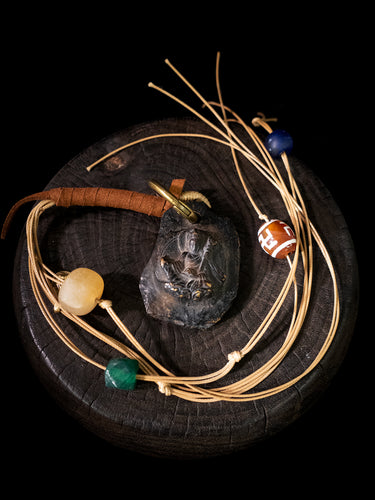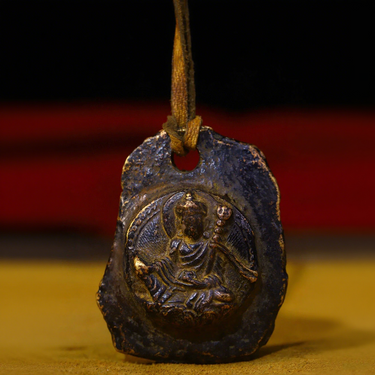Oriental Aesthetics is your premier destination for systematic, high-quality professional services catering to Oriental artists, collectors, and enthusiasts who possess a deep appreciation and love for classical Oriental art. In this article, we embark on an enlightening journey through time to delve into the captivating world of General's Jars. Our aim is not only to provide a comprehensive exploration of their origins and evolution but also to surpass existing articles on Google by delivering unparalleled depth and richness of information.
Unveiling the Origins of General's Jars
Tracing its roots back to the illustrious Song Dynasty (960-1279 AD), General's Jars, also known as Guan Jars, hold an esteemed position in the realm of Chinese ceramics. These magnificent vessels have a rich and fascinating history that spans centuries, showcasing the exceptional craftsmanship and artistic vision of ancient Chinese artisans. The production of General's Jars originated from the renowned kiln site in Guan Yao, located in what is now known as the Hangzhou region of Zhejiang province in China. Guan Yao kilns were renowned for their exceptional quality and the expertise of the craftsmen who worked there. It was within this environment of artistic excellence that General's Jars were born.
During the Song Dynasty, General's Jars were primarily created for imperial and military purposes, reflecting the prestige and importance associated with these vessels. They were often used to store and transport various goods, including food, water, and other supplies needed during military campaigns. The large size and sturdy construction of General's Jars made them ideal for these purposes, ensuring that they could withstand the rigors of long journeys and provide ample storage capacity.
Craftsmanship and Symbolism of General's Jars
The creation of General's Jars involves an unrivaled level of artistry and craftsmanship. Each jar undergoes a meticulous process that commences with the careful selection of superior clay. By employing their skilled hands, artisans shape the jars to achieve impeccable proportions and exquisite forms. Through the firing process, the clay transforms into a resilient ceramic material, while the application of intricate hand-painted designs and glazes further enhances their allure.
Symbolism lies at the core of General's Jar design, with every motif and detail chosen with utmost care to convey profound cultural significance. Dragons, phoenixes, lotus flowers, and landscapes grace these vessels, embodying concepts such as power, rebirth, purity, prosperity, and harmony. The colors employed in General's Jar design hold their own symbolic meanings, with red symbolizing luck and happiness, while gold represents wealth and abundance.
Evolution and Influence of General's Jars
The evolution and influence of General's Jars, also known as Guan Jars, extend far beyond their origins in the Song Dynasty. These remarkable vessels have undergone significant transformations over the centuries, leaving an indelible mark on the history of Chinese ceramics and influencing artistic traditions around the world.
During the subsequent dynasties, such as the Ming (1368-1644 AD) and Qing (1644-1912 AD) dynasties, General's Jars continued to captivate artists, collectors, and connoisseurs. The Ming Dynasty brought about a refinement of the jar's design, with a focus on simplicity and elegance. The iconic blue and white color scheme, for which Ming ceramics are renowned, was introduced during this period and became synonymous with General's Jars. The delicate blue motifs on the pristine white background created a harmonious and visually striking aesthetic that still enchants admirers today. Under the influence of Emperor Kangxi during the Qing Dynasty, General's Jars experienced a true renaissance. The kilns at Guan Yao were once again active, producing jars with a wider range of motifs and colors. The famille rose and famille verte styles emerged during this time, characterized by vibrant enamel colors and intricate designs. These innovations expanded the artistic possibilities of General's Jars, captivating collectors and connoisseurs with their breathtaking visual appeal. The influence of General's Jars reached far beyond China's borders and had a profound impact on global ceramic traditions. The export of these jars to Southeast Asia, Europe, and the Middle East introduced Chinese ceramic art to the world and fostered cross-cultural exchange. The intricate designs and exquisite craftsmanship of General's Jars were highly sought-after by foreign collectors, leading to the development of specialized trade routes and the establishment of ceramic centers in various regions.
In Europe, the arrival of General's Jars sparked a phenomenon known as Chinoiserie—a decorative style that imitated Chinese art and culture. The vibrant motifs and elegant forms of General's Jars inspired European artisans to incorporate similar elements into their own creations, resulting in a fusion of Eastern and Western aesthetics. This cross-pollination of artistic styles contributed to the development of unique ceramic traditions in Europe, such as Delftware in the Netherlands and Meissen porcelain in Germany. Furthermore, the allure of General's Jars had a profound impact on the Japanese ceramic tradition. Known as Karamono, these Chinese ceramics were imported into Japan and greatly influenced the development of Japanese pottery. The elegant forms, delicate designs, and refined glazes of General's Jars became sources of inspiration for Japanese potters, leading to the creation of exquisite ceramic works that blended Chinese and Japanese artistic sensibilities. In contemporary times, the legacy of General's Jars continues to thrive. They are highly sought-after by collectors, museums, and art enthusiasts worldwide. The timeless beauty, exceptional craftsmanship, and historical significance of these jars make them coveted treasures. The appreciation for General's Jars extends beyond their aesthetic appeal; they serve as tangible links to the rich cultural heritage of China and offer a glimpse into the artistic achievements of the past.
General's Jars, with their historical significance and artistic splendor, have become highly coveted treasures among collectors worldwide. Their rarity, combined with the expertise required to produce them, contributes to their immense value and desirability. Collectors and enthusiasts alike appreciate General's Jars not only for their aesthetic allure but also for their ability to transport us back in time, allowing us to connect with the rich cultural heritage of ancient China.
In conclusion, General's Jars stand as testaments to the extraordinary artistry, craftsmanship, and symbolism that define classical Oriental art. These magnificent vessels, with their deep historical roots and captivating designs, offer us a precious glimpse into the cultural heritage of ancient China. At Oriental Aesthetics, we take immense pride in providing exceptional services and expertise to those who cherish and appreciate General's Jars and other classical Oriental art forms. Through our comprehensive offerings, we strive to support collectors, artists, and enthusiasts in their exploration and appreciation of these remarkable artifacts. Join us at Oriental Aesthetics as we continue to celebrate the beauty, history, and cultural significance of General's Jars and the broader world of classical Oriental art.
























